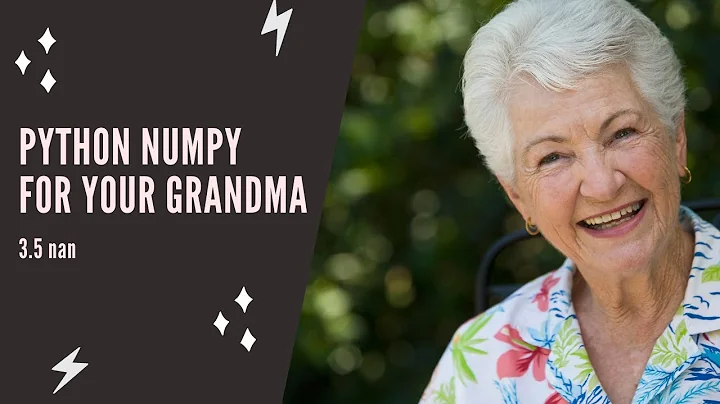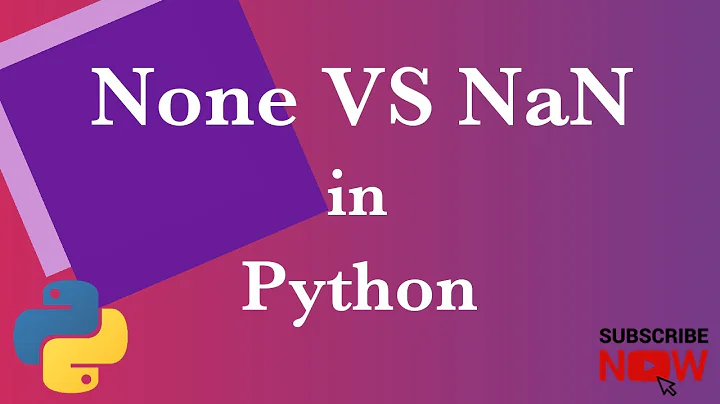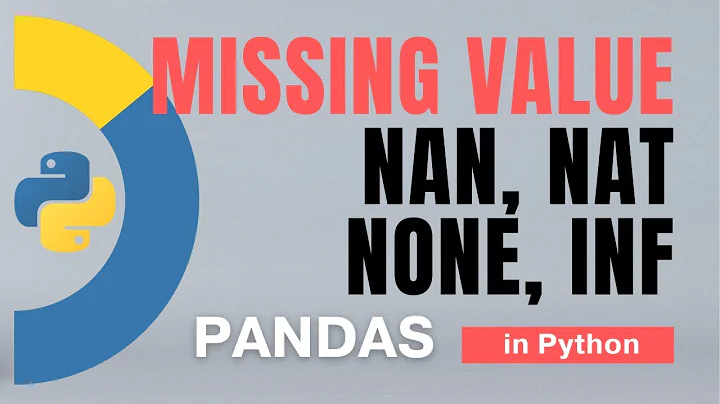numpy.isnan(value) not the same as value == numpy.nan?
nan != nan. That's just how equality comparisons on nan are defined. It was decided that this result is more convenient for numerical algorithms than the alternative. This is specifically why isnan exists.
Related videos on Youtube
Alexander McFarlane
I'm pretty average at snowboarding Quantitative researcher designing prop trading strategies in python Random Quotes If a man does not have to work: If he does not grow crops or hunt or do something, he very quickly destroys himself - Yaka Garimala, quoting an Aboriginal saying Physics Nobel Laureate Quotes Physics is like sex: sure, it may give some practical results, but that's not why we do it - Richard Feynman All science is either physics or stamp collecting - Ernest Rutherford Anyone who has never made a mistake has never tried anything new - Albert Einstein Because of its extreme complexity, most physicists will be glad to see the end of QED - Paul Dirac
Updated on April 09, 2020Comments
-
 Alexander McFarlane about 4 years
Alexander McFarlane about 4 yearsWhy am I getting the following:
>>> v nan >>> type(v) <type 'numpy.float64'> >>> v == np.nan False >>> np.isnan(v) TrueI would have thought the two should be equivalent?
-
Joe Kington about 9 yearsAlso see: stackoverflow.com/a/1573715/325565 (not directly python-related, but written by a member of the IEEE-754 committee that defined why this is the way it is)
-
 Alexander McFarlane about 9 yearsI guess it makes sense that two undefined values cannot be compared as identical because they are by definition undefined. Just a little confusing when you get a nan != nan error the first time!
Alexander McFarlane about 9 yearsI guess it makes sense that two undefined values cannot be compared as identical because they are by definition undefined. Just a little confusing when you get a nan != nan error the first time! -
 wim about 9 yearsrelated: stackoverflow.com/q/13003202/674039
wim about 9 yearsrelated: stackoverflow.com/q/13003202/674039
-
-
 Alexander McFarlane about 9 yearsThanks! That thoroughly confused me for a while when debugging :)
Alexander McFarlane about 9 yearsThanks! That thoroughly confused me for a while when debugging :) -
jedwards about 9 yearsBy the way, this is likely due to IEEE 754 which states: Four mutually exclusive relations are possible: less than, equal, greater than, and unordered. The last case arises when at least one operand is NaN. Every NaN shall compare unordered with everything, including itself. Edit: Looks like I was beaten by ~2 hours by a comment with a link that goes into more detail -- see Joe Kington's comment to the question.







![[Pandas Tutorial] how to check NaN and replace it (fillna)](https://i.ytimg.com/vi/JJaLtI-6BT0/hqdefault.jpg?sqp=-oaymwEcCOADEI4CSFXyq4qpAw4IARUAAIhCGAFwAcABBg==&rs=AOn4CLCBSYaunluvyPFx6OZQJiLiBLuOmg)



![Why in numpy `nan == nan` is False while nan in [nan] is True - PYTHON](https://i.ytimg.com/vi/lR61-wPS210/hq720.jpg?sqp=-oaymwEcCNAFEJQDSFXyq4qpAw4IARUAAIhCGAFwAcABBg==&rs=AOn4CLA2yfxUzqVd6YdnNqd6CuPq0bONeA)